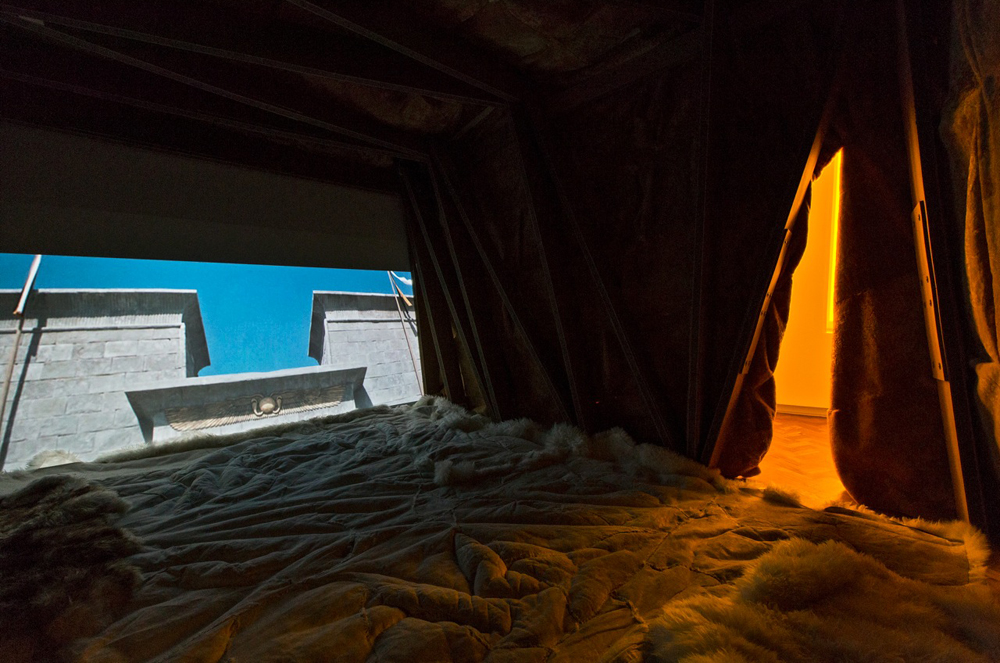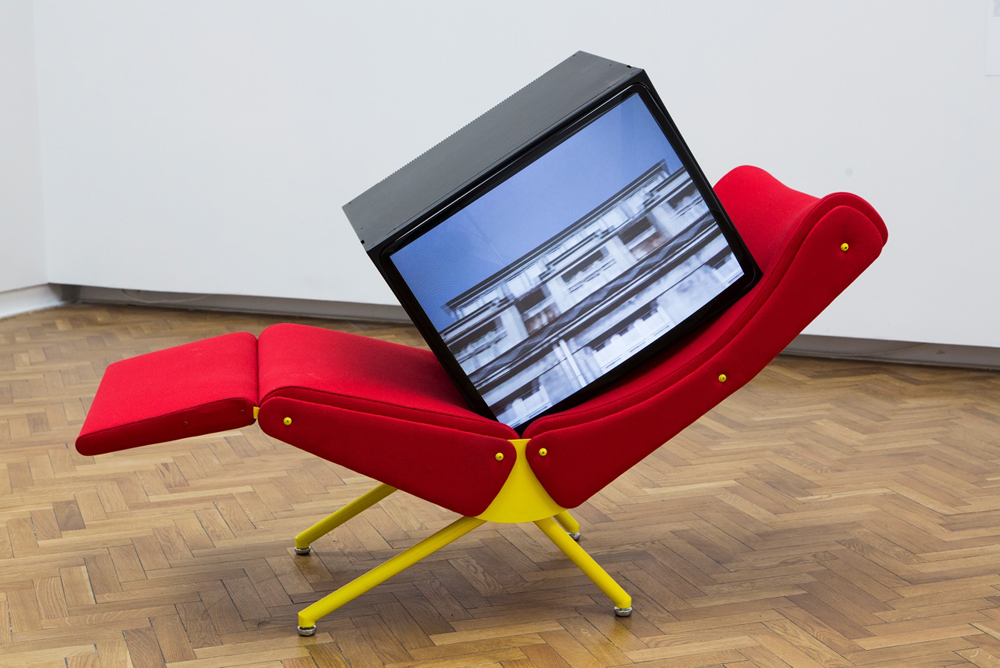As in Tati’s film, the appearance of modernist elements of life do not necessarily go hand in hand with the comfort of use. Through the ambiguous status of the objects, which turned into works of art and design fetishes, C.T. Jasper casts doubt on the question of their functions. He displays the utilitarian objects as ‘exhibits’ in the museum - an institution which for centuries has been developing disciplinary rules of conduct for the public. PLAYTIME also raises questions of how artistic work inspired by film affects people in a given space and how the space from particular film, which in terms of the art of film-making functions as an unreal place, reproduces the tangible world.
James Voorhies, in his essay Something else, something more than merely an exhibition or film: the art of C.T. Jasper claims that the exhibition space is an integral catalyst used by the artist to engage the audience in the film space. He considers it a new sensory experience.
The strength of this work results from the juxtaposition of the exhibition space with that of film. From the very moment of entering the exhibition, the audience experience a state of confusion and curiosity [...] Being in the joint space of the installation and film creates new mode of cinematic exposition.
– says Voorhies.
Sunset of the Pharaohs
Similarly to the installation Erased (2012-2013), in the Sunset of the Pharaohs (2014) prepared for the Frieze Art Fair in New York, viewers are exposed to the experience of architecture of the void designed by the artist. Once again, C.T. Jasper has digitally erased all of the human figures from a 60s feature film, giving it a new quality. The installation enables viewers to focus entirely on the set design and the interiors in which the story takes place, provoking them to reflect on the art of film-making and to actively participate in fiction and reality experienced in three dimensions. According to James Voorhies, the aim of such action is to expand the forms of film within the exhibition space.
 C.T. Jasper, Sunset of the Pharaohs, 2014, photo: Piotr Tomczyk
C.T. Jasper, Sunset of the Pharaohs, 2014, photo: Piotr TomczykThe installation Sunset of the Pharaohs, which combines video projection and architectural structure, brings together both his practice of creative appropriation and a concern with current socio-political issues. In the critical text accompanying the premiere of the video installation in New York, Christopher Eamon wrote:
While Jerzy Kawalerowicz’s 1966 film Pharaoh provides the material basis for Jasper’s work, in the context of the Arab Spring and its inconclusive aftermath, the film’s structure and narrative become particularly topical. Even as the far-reaching socio-political effects have been felt across the globe, the process of revolution in the Middle East is ongoing. Jasper’s Sunset of the Pharaohs provides, then, a timely, critical context for the processes of reading, writing and rewriting history in a mediated culture.
The architectural structure clad in tanned sheepskin recalls a nomadic lifestyle and it is also highly suggestive of a camera’s bellows – a device for increasing the focal length of the lens which enables precise exposure of a detail or the whole scene.
One of the most recent works prepared for an exhibition at the Museum of Art in Łódź is Vertigo(2015). The video played on an CRT screen installed on a chaise longue made in the style of design prevailing in the second half of the 20th century shows Łódź, city of capitalist origin which has many connections with Jasper’s city of residence – New York. The artist, just like a 19th century flâneur, greedily and carefully observes the top floors of Łódź houses. His camera captures the frontage of the streets of a city full of contrasts, signs of past economic splendour and the potential for new development.
 C.T. Jasper, Vertigo, 2015, photo: Piotr Tomczyk / courtesy of the artist
C.T. Jasper, Vertigo, 2015, photo: Piotr Tomczyk / courtesy of the artistCollaboration with Joanna Malinowska
C.T. Jasper has worked with Joanna Malinowska on several occasions. The most significant collaborative projects include Mother Earth, Sister Moon (2009-2013), a work dedicated to the Polish-American Indian Friends Movement and an opera Halka / Haiti: 18 ° 48'05" N 72 ° 23'01'' W, that was presented at the Polish Pavilion at the 56th Venice Biennale in 2015. The latter took form of a monumental panoramic film projection of the performance of the opera Halka by Stanisław Moniuszko, which took place on 7th February in the town of Cazale located in the Haitian mountains north of the capital.